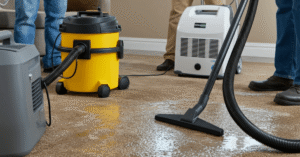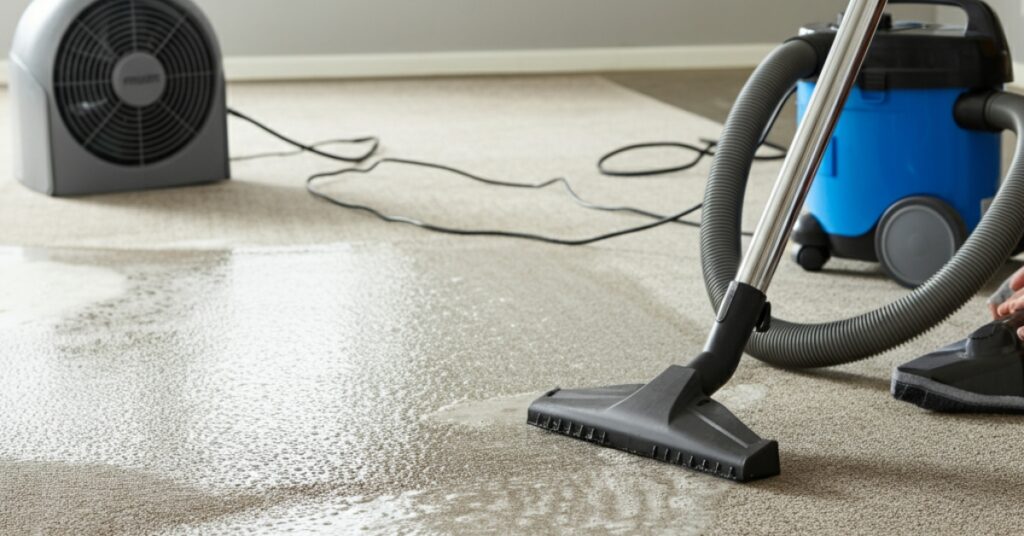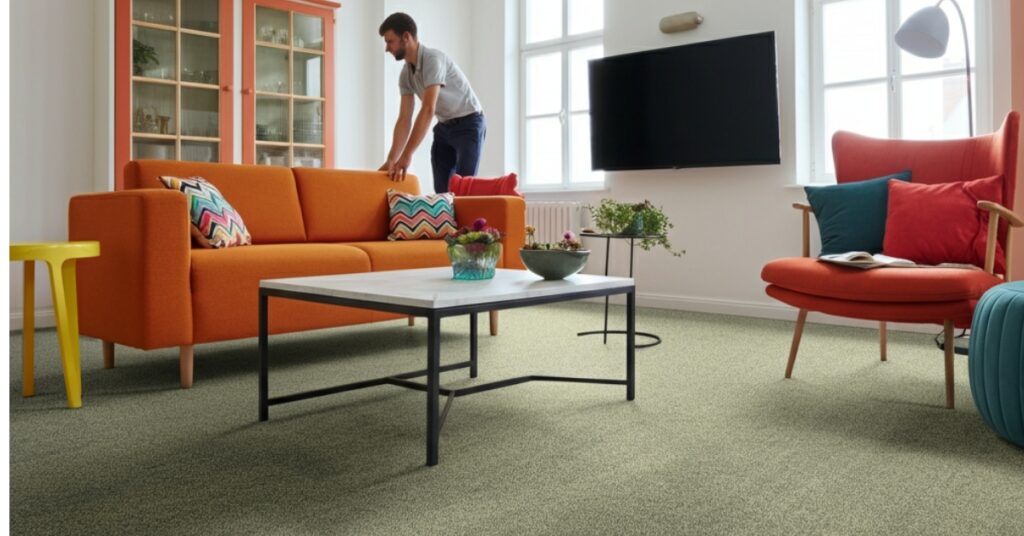As an Amazon Associate, I earn from qualifying purchases.
Wool carpets bring elegance and warmth to any home, but they require special attention when it comes to cleaning. Unlike synthetic fibers, wool is a natural material that can be damaged by harsh treatment or improper vacuuming techniques. Many homeowners worry about maintaining their expensive wool carpets, especially when it comes to regular vacuuming.
Understanding how to vacuum wool carpet properly will help you preserve its beauty and extend its lifespan. This guide covers everything you need to know about caring for your wool carpet through proper vacuuming techniques. Additionally, you’ll learn about the right equipment, frequency, and methods that protect your investment while keeping it looking fresh and clean.
Understanding Wool Carpet Properties
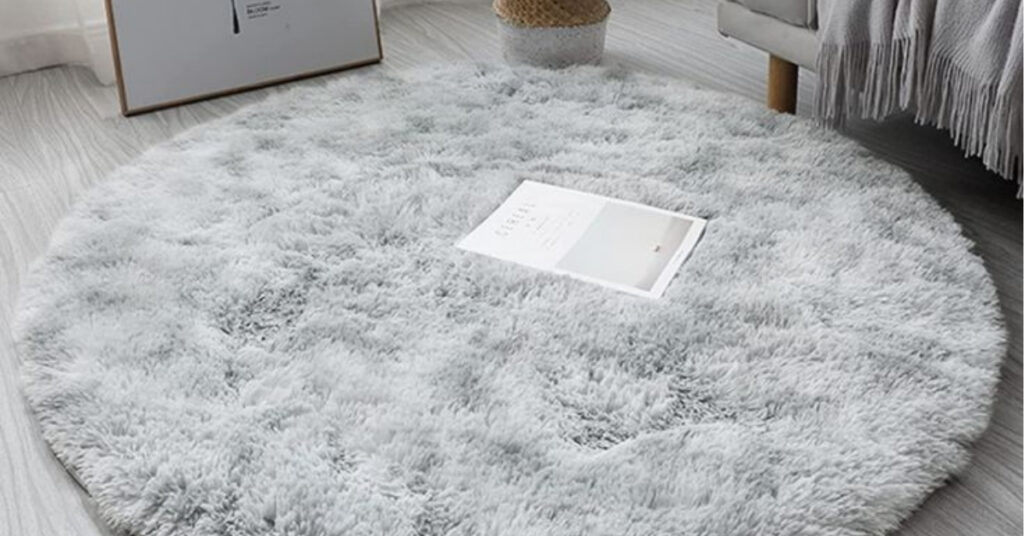
Wool carpet fibers have unique characteristics that distinguish them from synthetic materials. Natural wool contains lanolin, which provides inherent stain resistance and helps repel dirt. However, this same natural composition makes wool more sensitive to aggressive cleaning methods and excessive moisture.
The structure of wool fibers allows them to compress under weight, then spring back to their original shape when the pressure is removed. This resilience makes wool carpets durable, but it also means that dirt and debris can become trapped deeper within the pile. Therefore, regular and proper vacuuming becomes essential for maintaining the carpet’s appearance and preventing permanent damage from embedded particles.
Why Wool Carpets Need Special Care
Wool fibers can felt or shrink when exposed to heat, moisture, or excessive agitation. Traditional vacuum cleaners with rotating brushes can cause fuzzing, pulling, or even tearing of delicate wool fibers. Furthermore, the natural oils in wool can attract certain types of dirt, making thorough but gentle cleaning crucial for long-term carpet health.
The pH level of cleaning products also matters significantly with wool carpets. Alkaline solutions can damage the fiber structure, causing discoloration or weakening. This sensitivity extends to vacuuming practices, where the wrong approach can lead to premature wear or visible damage to the carpet surface.
Choosing the Right Vacuum for Wool Carpet
Selecting an appropriate vacuum cleaner is the first crucial step in properly maintaining your wool carpet. Not all vacuums work well with natural fibers, and using the wrong type can cause more harm than good. Canister vacuums with adjustable suction settings typically work best for wool carpets because they offer better control over cleaning intensity.
Upright vacuums can work if they have adjustable brush heights and variable suction controls. However, many standard upright models have fixed brush bars that spin too aggressively for delicate wool fibers. Look for models specifically designed for delicate carpets or those with a “gentle” or “wool” setting that reduces brush agitation.
Essential Vacuum Features for Wool Carpets
Variable suction control allows you to adjust the cleaning power based on your carpet’s needs. Start with lower settings and gradually increase if necessary. Additionally, adjustable brush height ensures the vacuum head maintains proper contact with the carpet without pressing too deeply into the pile.
Soft bristles or no rotating brush options protect delicate wool fibers from damage. Some high-end vacuums offer interchangeable heads specifically designed for natural fiber carpets. Moreover, quality filtration systems help capture fine particles that might otherwise resettle on your carpet after vacuuming.
Preparing Your Wool Carpet for Vacuuming
Before you begin vacuuming, remove any visible debris by hand. Pick up large particles, pet hair clumps, or any objects that might clog the vacuum or damage the carpet fibers. This preliminary cleaning prevents the vacuum from pushing debris deeper into the carpet pile.
Check the carpet for any loose threads or snags that might get caught in the vacuum brush. Trim these carefully with scissors to prevent them from being pulled and creating larger problems. Also, ensure the room has adequate lighting so you can see the carpet surface clearly and identify any problem areas that need special attention.
Adjusting Room Conditions
Close windows and doors to minimize air circulation that might blow dust around during vacuuming. This helps ensure that particles you lift from the carpet don’t resettle elsewhere in the room. Additionally, remove lightweight furniture or decorative items that might be displaced by the vacuum’s airflow.
Test your vacuum settings on a small, inconspicuous area of the carpet first. This allows you to verify that your chosen settings won’t damage the wool fibers before proceeding with the entire room. Pay attention to how the carpet responds to different suction levels and brush settings.
Proper Vacuuming Technique for Wool Carpets
Start with the lowest suction setting and gradually increase if needed. Wool carpets don’t typically require maximum suction power, and excessive force can damage the fibers or pull them from the backing. Move the vacuum slowly across the carpet surface, allowing it adequate time to pick up embedded dirt and debris.
Use overlapping strokes to ensure complete coverage without missing any areas. However, avoid going over the same spot repeatedly, as this can cause unnecessary wear on the wool fibers. Instead, make two or three passes in different directions to thoroughly clean the carpet without excessive agitation.
Directional Vacuuming Methods
Vacuum in multiple directions to lift dirt from all angles within the carpet pile. Start by vacuuming north to south, then east to west, creating a crosshatch pattern across the entire carpet. This technique helps restore the carpet’s natural texture while ensuring comprehensive cleaning.
Pay special attention to high-traffic areas where dirt accumulates more quickly. These zones may require slightly more passes, but maintain the same gentle approach. Focus on areas near doorways, in front of furniture, and along pathways where foot traffic naturally concentrates throughout the day.
Frequency and Timing Recommendations
Vacuum high-traffic wool carpets two to three times per week to prevent dirt buildup. Medium-traffic areas need vacuuming once or twice weekly, while low-traffic spaces can be cleaned weekly or bi-weekly. However, these frequencies may need adjustment based on factors like pet ownership, household size, and seasonal conditions.
Time your vacuuming sessions when the carpet is completely dry. Vacuuming damp wool carpets can cause damage and may not effectively remove dirt and debris. Moreover, allow adequate time for thorough cleaning rather than rushing through the process, which could lead to incomplete dirt removal or carpet damage.
Seasonal Considerations
Increase vacuuming frequency during seasons when more outdoor debris gets tracked inside. Fall leaves, winter salt, and spring pollen can all affect your wool carpet’s cleanliness and appearance. Additionally, consider the carpet’s exposure to sunlight, as UV rays can make wool fibers more susceptible to damage from aggressive cleaning.
Monitor your carpet’s appearance between cleanings to determine if your current schedule meets its needs. If you notice dulling, matting, or visible soil buildup, increase the frequency slightly. Conversely, if the carpet maintains its appearance well, you might be able to reduce cleaning frequency without compromising its condition.
Common Mistakes to Avoid
Never use the beater bar or rotating brush setting on maximum when vacuuming wool carpets. This aggressive action can cause fuzzing, pulling, and premature wear of the natural fibers. Instead, use the gentlest effective setting that still removes dirt and debris adequately.
Avoid rushing through the vacuuming process or pressing down hard on the vacuum head. Wool carpets respond better to gentle, thorough cleaning than to aggressive, quick passes. Furthermore, don’t ignore the manufacturer’s care instructions, as they provide specific guidance for your particular carpet’s construction and fiber treatment.
Equipment-Related Errors
Using a clogged or dirty vacuum reduces cleaning effectiveness and can redistribute dirt back onto the carpet. Check and clean your vacuum’s filters regularly, empty the dust container when it’s two-thirds full, and replace bags before they become completely full. Additionally, inspect the vacuum’s brush roll for tangled hair or threads that might scratch the carpet surface.
Never use carpet cleaning products or pre-treatments without checking their compatibility with wool fibers first. Many commercial cleaners contain chemicals that can damage natural fibers or cause discoloration. When in doubt, test any product on an inconspicuous area before applying it to visible carpet sections.
Maintaining Your Vacuum for Wool Carpet Care
Regular vacuum maintenance ensures optimal performance and prevents damage to your wool carpet. Clean or replace filters according to the manufacturer’s schedule, typically every three to six months depending on usage. Clogged filters reduce suction power and can cause the motor to overheat, leading to inconsistent cleaning results.
Inspect the vacuum’s brush roll monthly for wrapped hair, threads, or debris that could scratch or snag carpet fibers. Remove any buildup carefully with scissors or the cleaning tool provided with your vacuum. Additionally, check the vacuum’s belt tension and replace it if it appears stretched or worn.
Professional Service Considerations
Schedule professional vacuum servicing annually to ensure all components function properly. Professional technicians can identify potential problems before they damage your carpet and can calibrate suction settings for optimal wool carpet care. Moreover, they can recommend specific attachments or settings adjustments based on your vacuum model and carpet type.
Keep spare parts like belts, filters, and bags on hand so you can maintain consistent cleaning performance. A well-maintained vacuum lasts longer and provides better results, ultimately protecting your wool carpet investment more effectively than neglected equipment.
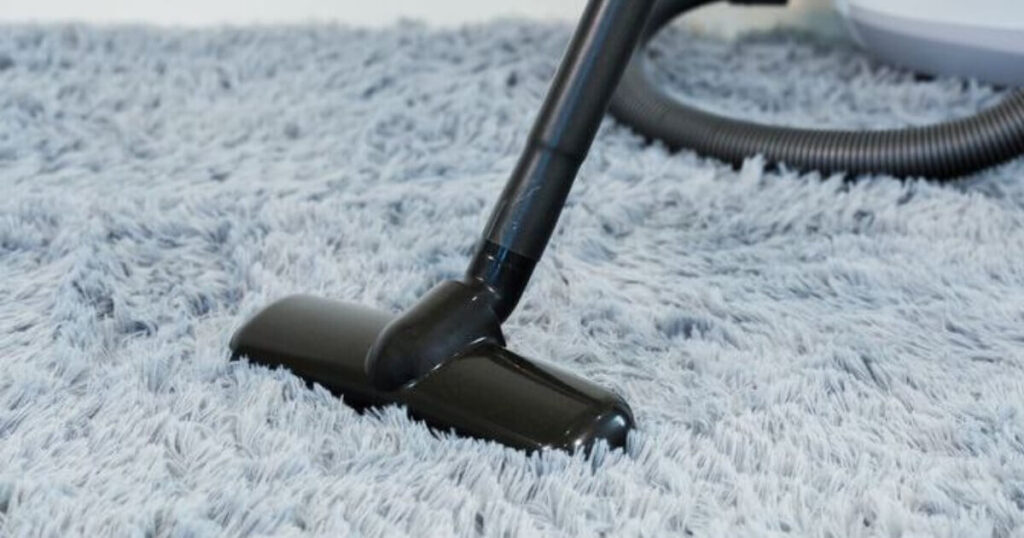
Frequently Asked Questions
1. Can I use a regular vacuum on wool carpet?
Yes, but you need to adjust the settings appropriately. Use lower suction power and gentle brush settings to avoid damaging the wool fibers.
2. How often should I vacuum my wool carpet?
High-traffic wool carpets need vacuuming 2-3 times weekly, while low-traffic areas require weekly cleaning. Adjust frequency based on household conditions and carpet appearance.
3. Will vacuuming damage my wool carpet?
No, proper vacuuming protects wool carpets by removing abrasive dirt particles. However, using incorrect techniques or settings can cause fiber damage over time.
4. Should I use the beater bar on wool carpet?
Avoid aggressive beater bar settings on wool carpets. Use the gentlest effective setting or turn off the rotating brush entirely if your vacuum allows it.
5. What vacuum setting works best for wool carpet?
Start with the lowest suction setting and adjust upward if needed. Use gentle brush settings or turn off rotating brushes to prevent fiber damage.
6. Can I vacuum wet wool carpet?
No, never vacuum wet wool carpet. Always ensure the carpet is completely dry before vacuuming to prevent damage and maintain cleaning effectiveness.
7. Why does my wool carpet look fuzzy after vacuuming?
Excessive brush agitation or high suction settings can cause fuzzing. Reduce these settings and vacuum more gently to prevent further fiber damage.
8. Do I need special attachments for wool carpet?
While not required, soft brush attachments or upholstery tools can provide gentler cleaning for delicate wool carpets, especially around furniture edges and corners.
Protecting Your Investment Through Proper Care

Proper vacuuming techniques significantly extend your wool carpet’s lifespan and maintain its beautiful appearance. By following these guidelines, you protect your investment while ensuring your home stays clean and comfortable. Remember that gentle, consistent care produces better long-term results than aggressive cleaning methods.
Regular maintenance prevents small problems from becoming expensive repairs or replacements. Therefore, establish a routine that works for your lifestyle and stick to it consistently. Your wool carpet will reward proper care with years of beauty and comfort, making the extra attention worthwhile for both your home’s appearance and your budget. Curious to learn more? This post breaks it down with clarity and precision: How to Clean Carpet.
As an Amazon Associate, I earn from qualifying purchases.

